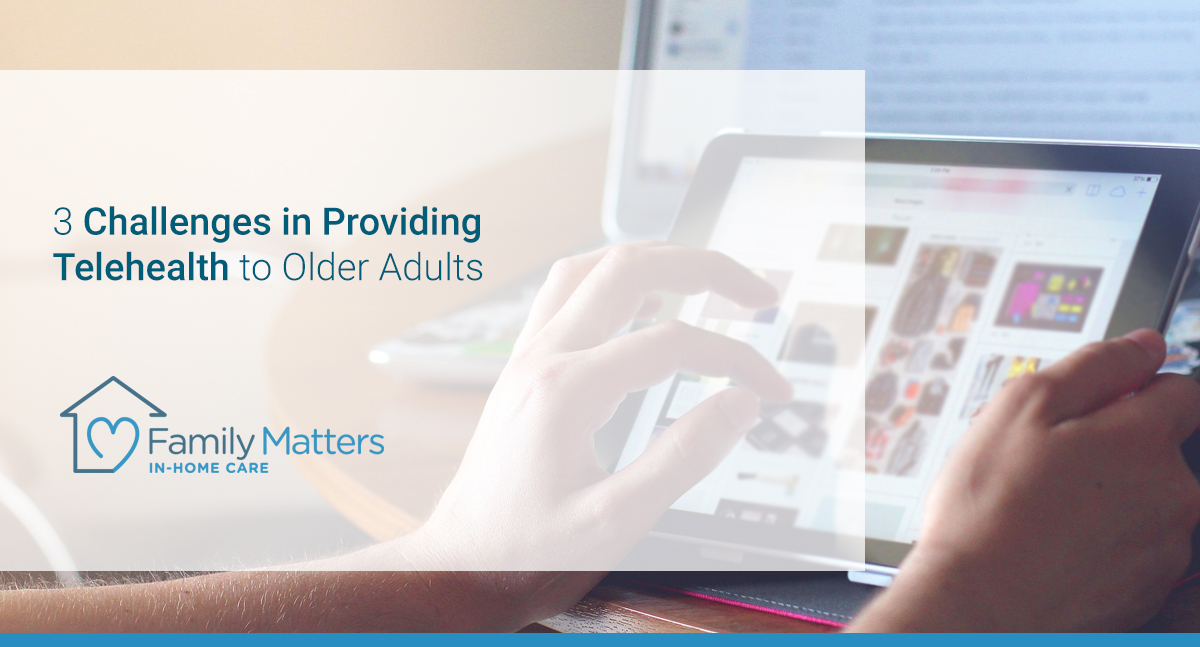
3 Challenges in Providing Telehealth to Older Adults
The benefits of telehealth services extend beyond convenience, so it’s important that older adults avoid potential barriers to accessing them. It’s not enough to simply tell older adults that services are available because too many variables can interfere with their access.
Many older adults are comfortable with telehealth services and use them regularly. Others need help from a caregiver, friend, or family member to participate in telehealth appointments.
While more mature adults are becoming comfortable with the process, the challenges in providing telehealth to older adults remain.
Why Is Telehealth So Important for Older Adults?
The convenience, safety, and cost-effectiveness of telehealth visits can significantly and favorably impact older adults’ health by granting better access to care. This is especially true for those with mobility or transportation issues that would otherwise hinder their ability to seek health care.
Some of the biggest benefits of telehealth visits for older patients include the following:
For many older adults, just leaving the house can be difficult, time-consuming, and even painful. When they can participate in virtual visits with their health care providers instead, they are much more likely to keep their appointments, follow-up visits, and check-ups as scheduled.
Barriers to Telehealth Appointment Access for Older Adults
Availability is not the main problem with telehealth for older adults. Telehealth services and telemedicine video visits are more widely available now than ever before. A recent survey conducted by JMIR Aging revealed that only 36.5% of older adults are comfortable connecting with their providers via telehealth visits.
What are the top challenges in providing telehealth to older adults? According to survey participants, barriers include the following:
These barriers are prevalent enough that a significant and disproportionate part of the elderly population in America still doesn’t use telehealth technology. In fact, more than 13 million of them are not able to receive care remotely without assistance.
3 Challenges in Providing Telehealth to Older Adults
In general, all of the above barriers to virtual medical visits can be summed up in 3 challenges in providing telehealth to older adults: communication limitations, difficulty with the technology, and the need for in-person assistance.
Communication Limitations
One of the biggest perceived limitations of telehealth involves communication. Medicare recipients who participated in the most recent National Health and Aging Trends Study said that they weren’t ready for virtual doctor visits because they had trouble communicating well enough to understand and be understood.
The survey found that of patients at least 85 years old, 72% met the AMA’s criteria for being “unready.” The criteria include the following:
Communication barriers between patients and providers remain among the biggest challenges in providing telehealth to older adults. Accommodations to combat communication barriers, such as closed captioning, can be made to improve the accessibility of virtual appointments.
Difficulty with the Technology
Several barriers fall under this challenge, from an older adult not owning a computer, tablet, or internet-ready cell phone to not knowing how to use devices even if they do have them.
A survey of Medicare beneficiaries revealed that more than 40% of survey participants did not have access to a smartphone with a data plan, and 41% of them did not have a computer with internet capability. About 25% of them didn’t have either type of device.
A JAMA Internal Medicine survey also showed that 30% of people over age 65 cannot participate in telehealth because of inexperience with the technology. This scenario is also known as digital illiteracy.
When the internet is unavailable for these individuals, it leaves only phone calls for telehealth visits. These conversations may be adequate for simple concerns, but more in-depth care requires virtual visits. Phone calls are also unsuitable alternatives for older adults with hearing and speaking challenges.
The Need for In-Person Assistance
Actionable plans to improve telehealth accessibility must include providing in-person assistance before and during virtual appointments. However, this assistance is difficult (or impossible) for many older adults to find, especially those who live alone.
Assistants are needed to walk older adults through the home setup and to teach them technology basics. They must help position the webcam, check lighting and audio, and make sure that the internet is connected.
Some older adults may also need interpreters or speakers with them to facilitate communication. Many likely need help with follow-up emails and accessing the apps of their health systems.
Overcoming Challenges in Providing Telehealth to Older Adults
Various limitations, including device access, digital illiteracy, and the need for assistance, continue to build barriers between older Americans and telehealth access.
However, there is progress; many resources are becoming more widely available, including voice-to-text programs, screen readers, and others. There’s a long way still to go, but the push for accessible telehealth services continues to gain momentum.
If you or your family member is considering in-home care as part of a plan to age in place, contact Family Matters In-Home Care today for a free consultation. Our team is dedicated to supporting your family and helping older adults enjoy life in the comfort of their own home for as long as possible.
Some of the services offered by Family Matter In-Home Care include: Alzheimer’s & Dementia Care, Bed & Wheelchair Transfer Assistance, Companionship, Housekeeping & Meal Preparation, Personal Care, Recovery Care, and Transportation.
Serving the San Francisco Bay Area and Greater San Diego, Family Matter In-Home Care has offices throughout California including: Campbell, CA, Roseville, CA, San Marcos, CA, and San Mateo, CA.
